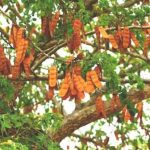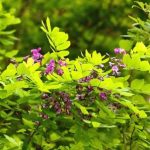TREE LIFE
September 1998
MASHONALAND CALENDAR
Tuesday 1st September. Botanic Garden Walk. Please bring the ‘Grewia Key’ with you (some copies will be available) for this month’s revision of the Grewia genus. We will meet Tom in the car park at 4.45 for 5 p.m. There will be a guard for the cars.
Sunday 20th September. A river, a dam and some termitaria promise to provide interesting day at the Wingfields property in Goromonzi. Bring a picnic lunch and meet at the lodge overlooking the dam at 9.30 a.m.
Saturday 26th September. Mark’s Walk this month will be on Bill Clarke’s property VALDOR in the Arcturus area. Starting time is 2.30 p.m.
Tuesday 6th October. Botanic Garden Walk
MATABELELAND CALENDAR
Sunday 6 September Hillside Dams – meet at Girls’ College car park at 8 a.m. for an 8.30 start.
TEMPLETON RANCH 19 JULY 1998
The house on this part of Templeton Ranch is tucked in between several kopjies and what a wonderful sight they must be when the morning sun just appears. However, kopjies and monkeys often go together and Ann was muttering things about them as we wandered through the veggie garden and passed the grape vines. Trumpeter hornbills in the kopjie foliage answered our calls and laughter before the path headed away from the boulders following a route that would bring us to the palm grove some distance away.
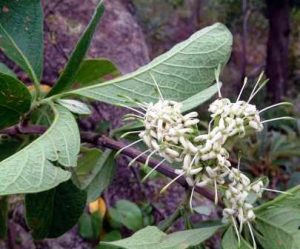
Pavetta schumanniana. Photo: Rob Burrett. Source: Flora of Zimbabwe
The path meandered at a number of places and so the line of members soon fragmented and we all seemed to enjoy a form of botanical hide and seek with a few of the common highveld species to get jaded eyes back to trees… such as Pavetta schumanniana with black nodules contained within the leaf and interesting to note how they shrink in size during the dry months. Rhus longipes and Croton gratissimus a very, attractive species with the orange tint and silvery undersides to the leaves. Some others included Acacia goetzei – smooth trunked but well armed with paired spines on the new growth and some caterpillar pod Ormocarpum kirkii – this being a scandent plant with masses of brown fruit’s in which the seed, green and curved is found. Looks worm-like hence the common name and the tree society’s now favoured identifier: a larger leaflet = the short name and vice versa for Ormocarpum trichocarpum.
Meeting up with Phil’s group in a thicket of Chinese lantern Dichrostachys cinerea we learnt that the roots of the Acacia polyacantha have a use as a snake repellent. Around the next bend in the path we met up with Ann’s group, surprise, surprise all of us having come to admire the large Diospyros mespiliformis or rather 2 of them on a termite mound which formed the corner of a beautiful little grove – complete with trickling stream and the palms beyond being Phoenix reclinata. A lush and tropical spot with the blue line of the Dyke hills behind.
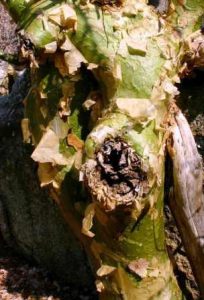
Commiphora marlothii . Photo: Bart Wursten. Source: Flora of Zimbabwe
However, the effect of the moisture is contained within a thin band and the terrain soon changes to a dry shallow slope with a Pod Mahogany Afzelia quanzensis, green Commiphora marlothii without the peeling ‘paper’ bark, the rocky slope almost devoid of grasses providing a fire proof environment and Euclea divinorum – deep green leaves with wavy leaf margins, an amazing plant as it always appears healthy in really harsh conditions.
The path crosses the stream here and where the grasslands starts occur a couple of the Dyke Ozoroa – Ozoroa longipetiolata. As the name suggests the leaves have a long petiole and a distinctive white underside and hang in a droopy manner. They are restricted to the highly mineralized soils of the Dyke and here Rob gave an explanation of how the Dyke was formed.
Immense pressures from the platelets caused magma to bubble up and absorb the greenstones which were the predominant rock types at the time resulting in a semi liquid and seriously hot ‘soup’ settling out and forming what is called a craton – the initial formation occurred around Mashava about 3 800 million years ago. Pressures created by the craton caused a failure and a ‘U’ shaped body welled up through the failure and is what we now call the Dyke. In the northern part of the Dyke erosion has removed the upper layers so the resulting dominant rock types are pyroxenite which is harder and contains less minerals than the soft easily flaked rock called serpentine which contains the seams of chrome ore. To the south where erosive forces have not been so severe the rock type called norite is to be found and associated with it is the valuable ore from which platinum is extracted. These ores which occur in curved seams called lopoliths exert a great influence on the vegetation and so the various endemic species and chemically tolerant plants have adapted to the high magnesium, calcium and chrome levels. The trace elements also affect the surface water which in turn can cause short-term diarrhoea in humans until the body adapts to the chemical level.
After geology back to the house for lunch and Bianchi homemade soup for some while others nosed about in an interested manner in Ann’s superb nursery. Within an hour most vehicles seemed to be sprouting green foliage including Kurt Braunstein’s Land Cruiser which seemed to suffer some damage to the upholstery with a large and wobbly Euphorbia ingens which ended up with a towel wrapped around its spiny upper parts.
Not far from the Dyke’s effects an intrusion of sodic soils occurs and with it Mopane woodland, with some surprisingly large specimens occurring here. Contained within the Mopane is a seasonal vlei with Mobola Plum Parinari curatellifolia all fruiting heavily. Pippa Cope tried one of the many ‘plums’ but the look on her face said enough about its qualities. Tangled in with these trees a small fig scrambled its way around and turned out to be one of the less common figs we come across – Ficus nigropunctata and there also appeared to be evidence of orchids – possibly the leopard orchid – Ansellia africana.
What happened to the original group remains a puzzle but it was a fabulous day – many thanks Ann. Thanks also to Rob Burrett for the geology of the Great Lopolith, sorry Dyke! It was especially pleasing to have a turnout of 57 members and guests including the youngest – my niece.
-Andy MacNaughtan
BOTANIC GARDEN WALK: 1 AUGUST 1998
More lowveld trees. The first was the Tamboti tree, Spirostachys africana. This occurs along streams and in dry gullies in the mist belt and is apparently confined to the SE parts of Zimbabwe, although Lyn Mullin mentioned a record from the Kwekwe/Gokwe area, which if correct would considerably extend its range.
The Tamboti belongs to the family Euphorbiaceae. It has milky sap, alternate leaves and a 3-locular fruit which resembles the fruit of Euphorbia itself. The flowers are in elongated spikes. Smoke from the burning wood of this tree is said to cause headaches and honey produced from the flowers is unpalatable.
A species we rarely encounter is Sideroxylon inerme from the family Sapotaceae. The Sapotaceae generally have spirally arranged leaves, milky latex (often rather reluctantly produced) and brownish indumentum on the young leaves and branches. There are two subspecies, one, subsp. inerme occurs in coastal South Africa and Mozambique, but not in Zimbabwe, and actually lacks the brownish pubescence so that it resembles Mimusops caffra.
Our subsp. is diospyroides, meaning like a Diospyros (I wonder which one was meant) and this possesses all three of the typical features of the Sapotaceae. In Zimbabwe, it is confined to the southern division, occurring on cliffs in the mist belt and in Gonarezhou.
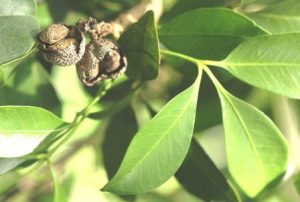
Toddaliopsis bremekampii. Photo: Bart Wursten. Source: Flora of Zimbabwe
Another rare species, which I’ve never seen and again is confined to the SE of Zimbabwe is Toddaliopsis bremekampii. This should not be confused with Toddalia asiatica, which is a prickly climber found in the Eastern Districts and on the high-rainfall outliers (we saw it on Buchwa Mountain two weeks ago). Toddaliopsis is a shrub or tree, not a climber, and is also not prickly.
Both species are from the family Rutaceae and therefore have pellucid glands in the leaf lamina which can be seen by holding the leaf up to the light. Both also have trifoliate leaves. Toddaliopsis is rare, occurring on hills between the Runde River and Gonarezhou.
During the walk, we saw four species from the Fabaceae, subfamily Mimosoideae. One was the Scotsman’s Rattle, Amblygonocarpus andongensis, which famously occurs by the platform at the Victoria Falls railway station. This is a beautiful tree with its large 2-pinnate leaves (which have no glands) and slightly greyish leaflets. It is a Kalahari sand species occurring in the NW of Zimbabwe and it also occurs on sandy soils in Mozambique and in our eastern districts. The flowers are arranged in creamy spikes and each pod (the “rattle”) is 4-angled.
We also looked at the well-known Xylia torreana in the Gardens, where it grows tangled up with Strophanthus kombe. Xylia, like most Mimosoideae, also has 2-pinnate leaves but is unusual in having only one pair of pinnae. The flowers are in yellowish spherical heads and the pods are unusually thick and woody. It is most common in the Jesse but also occurs in the southeast on hills.
Our third legume was Albizia petersiana subsp. evansii. This is another rare low-altitude tree occurring in woodland in the south and east of Zimbabwe. Tom mentioned once again the useful features for naming Albizia, namely the leaflet size and the position of the gland on the petiole. This species has medium-sized leaflets, much larger than, say, Albizia amara but not as large as Albizia versicolor.
Another Albizia seen was Albizia forbesii. This is a low-altitude species in the SE occurring along streams and in river valleys. The leaflets are small, similar in size to amara or Albizia harveyi. The “outlying population near Marandellas” (Coates Palgrave, p.219) is presumably the tree growing at Headlands at an altitude of c.1600 m. Although I believe still uncertain, this is now thought to be a hybrid between Albizia antunesiana and Albizia amara.
Finally, having examined and compared three species of Commiphora, namely Commiphora viminea, Commiphora tenuipetiolata and Commiphora caerulea, we were shown a very rare species Commiphora neglecta. In Zimbabwe, this has been recorded once on a hill near the border in the Chisumbanje area. It has spiny branchlets, a deep green stem with peeling brownish flakes of bark and trifoliate leaves a bit like Commiphora africana or Commiphora schimperi.
Once again, a most thought-provoking session. Our grateful thanks go to Tom.
-Mark Hyde
NYARUPINDA CATCHMENT
Leeches and termites. Bird Walk March 15th. T L. 220 page 7.
Thank you I. C. Riddell and a non-member of the Tree Society of Zimbabwe Mrs. Meg S. Cumming of Highlands Harare for the following information.
The leeches were flatworms called Planarians, which are very primitive land-loving carnivorous multicellular animals, which, on the evolutionary tree are above hydra and jellyfish but are two branches below earthworms and leeches. The scientific name of this flatworm is Microplana termitophaga, it preys on termites called Odontotermes transvaalensis and Odontotermes latericius which build chimneys to ventilate their nests in mounds.
The Microplana sp. ‘fish’ over the rim of the open chimney for worker termites where they are at the mercy of the ‘soldiers’. They retreat with their prey down the outside of the vent to suck in the contents of the termite with their pharynx which is ventral and half way down their body, close to digestive tissues. The microclimate inside the chimney always has the correct humidity for Microplana, but the temperature is too high, 27 degrees C and vapours emitted from below may contain methane which is unacceptable therefore they do not venture inside.
Only when the rains have become established do the Planarians become active and feed at predictable times if the weather is wet, humid and overcast, 6 a.m. – 8 a.m. and between 6 p.m. and 9 p.m. They move slowly in their own slime. Adults vary in length 1cm-6cm. This association between termite and flatworm has only recently been discovered, in 1990.
Mrs. Cumming would be delighted to know details of sightings in 1999, this most likely on a shaded well-vegetated termite mound in January or February, this pastime will surely reveal shrubs and trees previously overlooked. Nocturnal inspection should be by dim torchlight so as not to disturb them feeding; emphasis is on their crepuscular habit, they are not nocturnal. Mrs. Cumming recorded 51 Microplana sp. at any one time on a chimney in the year 1990-91.
In TL 221 page 6
The letter to dear Old Bean was sent from Browseland, Mashonaland West, the whole family modulating was not meant, it was nodulating (making root nodules). Des Modium and I were all agog . . . etc. Boerewors is not a word often written by me, it looks much better with ‘e’ in the middle. Thank you Maureen Silva-Jones for having space to include the historic analysis of Rhodesian Foodstuffs. It is strange that Mopane, Colophospermum mopane was not collected and tested, the source must have been too far away, its fruit ripens in the dry season and provides, together with the fallen leaves, winter browse for game and stock.
A Few Words about No 13 Rhodesian Foodstuffs.
On returning from a Tree Society outing it is good to come home to bean sprouts in a salad or sandwich or a side-dish of dhal, green mung beans Phaseolus mungo var. max can be used for this, the brown or black mung bean is var. radiatus, in the chart; this is black gram (which means any ripe leguminous seed used for food), and when made into flour, is traditionally the chief ingredient of the wafer biscuits known as ‘poppadams’ (Tamil) to accompany curry on a cold winter’s night. Done in a jiffy in the Microwave!
Azolla the Floating Aquatic Plant.
Recently this waterweed has appeared in the middle part of Nyarupinda Catchment, it has made a complete cover from bank to bank, effectively preventing light and warmth from the sun reaching the water and its inhabitants. Azolla de-oxygenates the water and affects most of the aquatic fauna. The aesthetic qualities of the water are lost, no reflections.
Combretum adenogonium (Fourth present name)
Please would someone explain how the specific name helps us to identify this species, which is beginning to flower now? Does adenogonium have gland or angular connotations? Combretum fragrans was apt and delightful.
A ground Orchid in flower.
July 14th. Pale yellow petals, inside petals brown/maroon. Leafless stem 40cm tall, found on vlei margin growing at the foot of Pterocarpus rotundifolius polyanthus, the latter often seen in the catchment. The few flowers were much paler than Eulophia streptopetala.
July 21. A Mysterious Happening in the Paddock Next Door.
In the evening we went to the lone female Marula tree to see what it was doing. There was a plastic bag of ripe fruit wedged into the fork of a branch, then looking higher up we were surprised to see a platform of new bush poles tied together with bark rope (tambo). Below the platform the ground was cleared of grass and shrubs. Was this set up for poaching? By whom? Mr. Ashburner’s Charolais bulls have been in this paddock. Small game might like the Marula fruit. We have made enquiries and will inform you if there is anything of interest. Incidentally the bulls had to be moved out before the Dunlop Motor Rally!
July 25th Curiosity necessitated another visit to the Marula tree on a derelict termite mound, the platform and bag of fruit were as seen on July 21st but no doubt the fruit is becoming alcoholic. It was not a place of slaughter as might have been expected. A solitary plump Marula seemed to be the last of a light crop.
Cheers, go well,
-Benedicta Graves
NOTES FROM THE LAY-BYS
After an absence of 10 years, Anne and I drove down into the Save (Sabi) Valley in mid-June on a round trip to Chipinge and Chimanimani. There is much greater evidence of settlement between Wengesi and Birchenough Bridge than there used to be, and it was disturbing to see how much firewood is stacked for sale along the roadside. There is little doubt that the bush is being stripped for this commodity.
Nearly all the Baobab were leafless, but some had a few leaves and one was even in full leaf still, perhaps tapping into water that the others did not have access to. I did not think that the Sooty mould had affected any more trees than I remembered from the mid 1980s, but there is no doubt that some trees are very much more severely affected than they were 10 years ago. One completely black tree was dead, but the others seemed to be struggling on. A member of the Wildlife Society told me that trees affected by sooty mould extend well into Mozambique, and can be seen along the road from Espungabera. What interests me now is that there was no evidence of sooty mould on Baobab anywhere along the road from Masvingo to Beitbridge, Messina, and Louis Trichardt when we visited South Africa earlier in the year. If the sooty mould is drought related, as seems probable, why has that region escaped when the Save Valley is so much affected? The drought of the 80s and 90s was no less severe in the one region than it was in the other. Perhaps there is more to the sooty-mould story than we have discovered so far.
Still on Baobab, we saw an alarming increase in bark stripping for making mats, and Baobab ¬bark mats were hung up for sale everywhere. Some of the smaller trees appeared to have been stripped bare, and only the larger ones have escaped so far – but for how long? Free-spending tourists have much to answer for! Enquiries about prices at one mat market indicated that small ones were going for $120, and larger ones for $300 or more. Translate that into British pounds, US dollars, German marks, or even South African Rand and you realize why so many Baobabs are going to spend a very chilly winter!
I had been asked by the Chipinge branch of the Wildlife Society to join them for their AGM in June, and to have a look over the Chimanimani arboretum, which is located directly across the road from the Chimanimani Hotel. The idea of this arboretum was first mooted in the 1950s, when a number of local residents, alarmed at the large-scale afforestation with pines, eucalypts, and wattle, wanted an arboretum in the village to preserve a representative collection of indigenous forest species before they all disappeared in the onslaught by the Forestry Commission, the Wattle Company, Charter Estates, and Border Timbers (the last two companies eventually amalgamated). In actual fact the fears of the local residents were entirely unfounded for none of the timber companies ever had any intention of removing indigenous forest to make way for exotics; woodland, yes, but not forest.
Plans for the arboretum were drawn up and were well received, but there were no funds to make a start. Finally, in about 1968 or 1969, a leading lady in the village approached the council and offered to develop the arboretum for no remuneration, provided she was given donations of trees and two council workers to help. This was agreed upon, and work on the arboretum began. Our leading lady did not use the original plans for the arboretum as she had an agenda of her own, which was to lay out the plantings on the design of the Union Jack. Remember, these were UDI years, so our leading lady must have been a “loyalist Royalist”. Trees and shrubs of all kinds were donated, among them red-flowering gums (Eucalyptus ficifolia) and white-flowering gums (Eucalyptus calophylla) – both ideal for a Union Jack design – but there must have been a dearth of blue-flowering trees! I remember seeing all the dead-straight diagonal lines in the arboretum in its very early days, but only learnt of the Union Jack design on our recent visit. I made a list of 59 species in the arboretum, some of them very tentative identifications, but the plan is to go ahead and clean it all up, perhaps remove some of the excessively duplicated species, and then label the remainder. The alternative is to lose the site to developers who want to build a supermarket!
At Chimanimani we were accommodated at Mawenje Lodge for two nights, courtesy of the proprietors, Wally and Leslie Johnson, and the Chipinge branch of the Wildlife Society. This is a most delightful place located on the Haroni River, just off the road to Chimanimani National Park and the Outward Bound Centre. The vegetation is typical Eastern Highlands low altitude riverine, with a preponderance of Breonadia salicina along the banks, and such species as Harungana madagascariensis, Catha edulis, Syzygium spp., and Newtonia buchananii, but there was also a lot of Mukwa (Pterocarpus angolensis), Acacia sieberiana, Faurea saligna, Heteropyxis natalensis, etc, just up from the river (the specific name of this last one shuttles backwards and forwards between natalensis and Heteropyxis dehniae, and I am not sure of the present state of play). I spent a bit of time with Wally Johnson naming the common trees for him but ran into quite a lot of difficulty with the large number of smaller trees and shrubs of the family Rubiaceae, so had to leave them in abeyance until, hopefully, there may be a return trip.
When you next travel the road between Rusape and Juliasdale keep an eye out for an unusual eucalypt in Zimbabwe, which stands just a few metres off the road on the south side, and almost exactly halfway between Km 28.0 and 28.5. This is Eucalyptus coolabah, originally introduced into Zimbabwe as Eucalyptus microtheca in about 1916. The nomenclature of the group of 3-5 species that make up the coolabahs (or coolibahs) has had a rather chequered history, but now seems to have been sorted out. They are all dry-country species from the central regions of Australia, and Eucalyptus coolabah has a huge natural range exceeded only by that of Eucalyptus camaldulensis. They are all rather crooked trees with very hard and heavy wood that is useful only for firewood and rough fencing.
I had noticed this tree many times over the years, but for one reason or another had never stopped to have a closer look, thinking that it was probably Eucalyptus melliodora. It was only last September that I finally did stop to examine it and to collect a few specimens for closer study, and it was then that I realized it was something a bit more unusual. There were no buds, but the mature fruit and the bark seemed to fit an even more unusual tree for this country – Eucalyptus raveretiana – although the absence of certain characters ruled this species out. On a trip to Nyanga early in June I found flower buds as well as mature fruit, so was able to track it down as Eucalyptus coolabah. For those who know the Australian song “Waltzing Matilda”, it was under the shade of one of these trees that the jolly swagman “sang as he watched and waited while his billy boiled…“ The specific name of the species is of Aboriginal derivation.
-Lyn Mullin.
TREES WITH ROOTS LIKE STILTS
The mangrove tree, Rhizophora, has a tangle of aerial roots that give it the air of a gigantic octopus squatting on the surface of a swamp. The roots grow out of its trunk, with the lower branches acting as stabilisers in the shifting mud of tropical shorelines and tidal flats. When the tide ebbs, the roots are exposed above the water and absorb oxygen from the air, while the underground roots remain submerged.
Low tide reveals a dense scaffolding of impenetrable evergreen forest. These labyrinths provide shelter for creatures from oysters and sponges to shrimps and crabs. They are also nurseries for big sea-going fish, such as sharks and tarpon.
The mangrove reproduces in this waterlogged environment by keeping its seeds out of the water. The fruit remains attached to the branches of the parent tree. The seed inside germinates in the damp air and puts out a single primary root that may grow as much as 10 in. (25cm) long. When the seedling is ready, it detaches itself, drops into the water and, remaining upright, takes root in the muddy bottom.
WATER COLLECTORS
In, the sultanate of Oman in the Middle East, a cistern dug at the foot of an olive tree and a Rhamnus – a buckthorn plant – collects up to 40 gallons (180 litres) of fresh water every day. In the Canary Islands, visitors can still see six open-air wells that used to fill with water condensed by a tree that no longer grows there: It was a kind of stinkwood, Ocotea foetens.
In several dry mountain regions scattered around the world, there are plants that have adapted in this way to become hidden springs, often used by people as well as the plant itself. Hairs on the rough upper surfaces of their leaves capture water vapour from mists and the merest drizzle of rain, which then condenses to trickle down the plant.
This characteristic enables many plants to survive outside their usual climate zones. The beeches on the seacoast of the Saint-Beaume massif, near Marseilles, for example, live in a climate that ought to be much too dry for them. But sea air rising up the steep incline of the massif creates the mists that keep them alive.
THE PASSION FLOWER: SIEGE WARFARE
Early Spanish settlers in the American tropics saw the passionflower as an emblem of Christ’s Crucifixion (or Passion): its corona stood for the Crown of Thorns, the styles for the nails on the Cross, and so on. To naturalists, the most striking feature of the passionflower, a kind of vine – is its endless battle with butterflies. There are nearly 500 species of passion¬flower, and most have devised ways to discourage the 500 species of Heliconius butterfly that strive to rear larvae on their foliage.
In the course of evolution, the butterflies have focused on the point when the young leaves are just large enough to make room for their eggs. When the caterpillars hatch, they attack the leaves and weaken the plant. Some passionflowers have attempted to alter the look of their leaves during the egg-laying season, but Heliconius has countered this visual tactic: it is able to identify the flowers by their chemical characteristics.
Undaunted, some species of passionflower have developed a nectar gland that lures stinging ants to fight off predators. Others have grown poisonous spines that can impale a caterpillar. Others have cells that grow into blobs that look like a batch of eggs. The female butterfly, sensing competition, abandon’s the plant and lays her eggs elsewhere.
GHOST OF THE DESERT
The desert amaranth, Amaranthus graecizans, is one of the tumbleweeds seen clambering over the sidewalks and porches of lonely ghost towns in traditional American Westerns. This apparently aimless wanderer is using a survival strategy particularly well designed for the vast open spaces of North America, and one practised by several plant families on the other steppes and prairies of the world.
The amaranth is an annual that is green and well rooted in summer but withers completely in the cold and drought of autumn. It dries into a ball of tangled branches that detaches itself from the root to embark on a windborne career that may take it hundreds of miles away. But the ball is not just a travelling skeleton looking for a grave: it carries a supply of seeds, and sows them as it rolls.
These extracts are taken from Nature’s Masterpieces – Published by Readers’ Digest and is acknowledged with thanks.
ANTIFUNGAL WARGURGIA – DERIVED COMPOUNDS
Warburganal is a unique dialdehyde sesquiterpene isolated from East African Warburgia plants. It has shown a strong antifungal activity in vitro. This activity was inhibited in the presence of sulphur-containing (sulphydryl) compounds. A further series of sesquiterpene dialdehydes was also isolated from the East African medicinal plants Warburgia stuhlmannii and Warburgia ugandensis (Canellaceae) and tested for activity against fungal cultures. Among these, polygodial exhibited the most potent activity. When tested on the yeast Saccharomyces cerevisiae, polygodial proved to be fungicidal lather than fungistatic. It also may enhance the passage of antibiotics/antifungals into the yeast cell.
Taniguchi M et al. (1983) Physiological activity of Warburganal and its reactivity with sulphydryl groups. Journal of Biochemistry 94:149-54. Kubo I, Tanguchi M (1988) Polygodial, an antifungal potentiator. Journal of Natural Products 51:22-9
-Douglas Ball
ANDY MACNAUGHTAN CHAIRMAN


